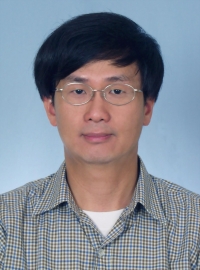
|
Pofessor Tsang-Ling Sheu
Professor Tsang-Ling Sheu received the BS degree in Electrical Engineering from National Cheng-Kung University, Taiwan, in 1981; the MS degree in Electrical Engineering from Virginia Polytechnic Institute and State University, Blacksburg, VA, USA, in 1985; and the Ph.D. degree in Computer Engineering from the Department of Electrical and Computer Engineering, Pennsylvania State University, University Park, PA, USA, in 1989.
From Sept. 1989 to July 1995, he worked with IBM Corporation at Research Triangle Park, North Carolina, USA. As a research staff member, his major works with IBM were the design and the development of networking products, such as high-speed routers and ATM switches. In Aug. 1995, he became an associate professor, and got a promotion to full professor in Feb. 2006 at the Dept. of Electrical Engineering, National Sun Yat-Sen University, Kaoshiung, Taiwan.
His research interests include Wireless and Mobile Communication Networks, Multimedia Video Streaming, Networking Protocols, and Parallel/Distributed Processing. He was the recipient of the 1990 IBM Outstanding Paper Award. Dr. Sheu is a senior member of the IEEE, the IEEE Computer Society and the IEEE Communications Society.
|